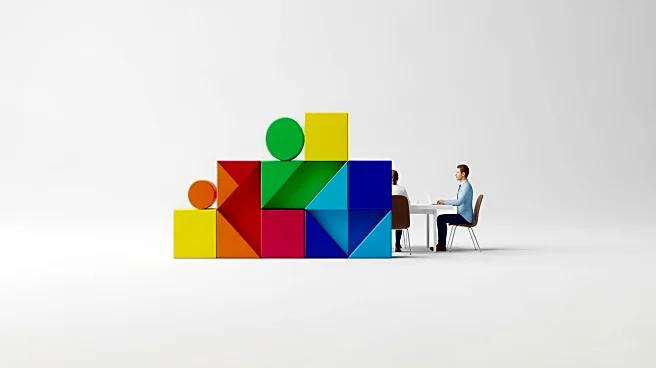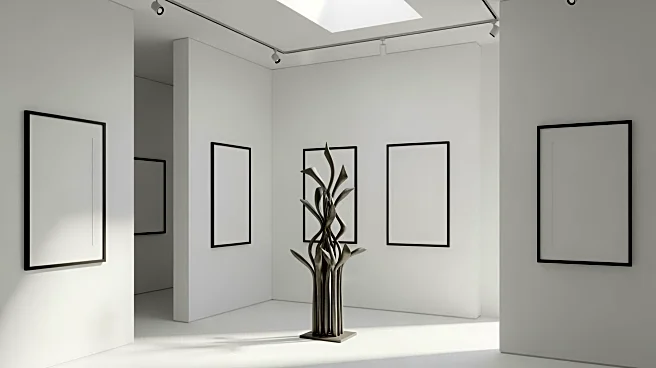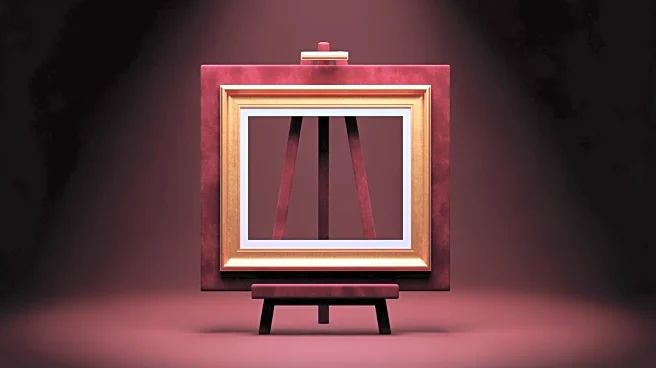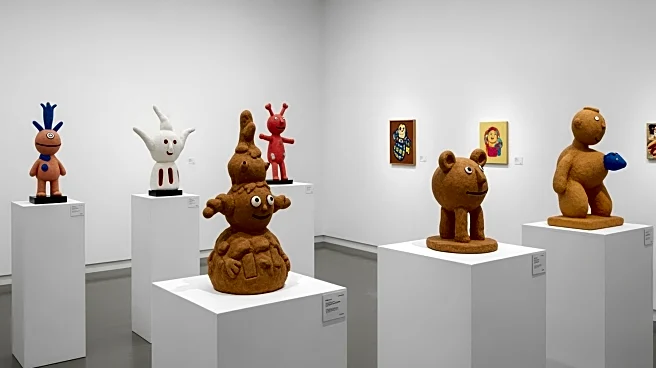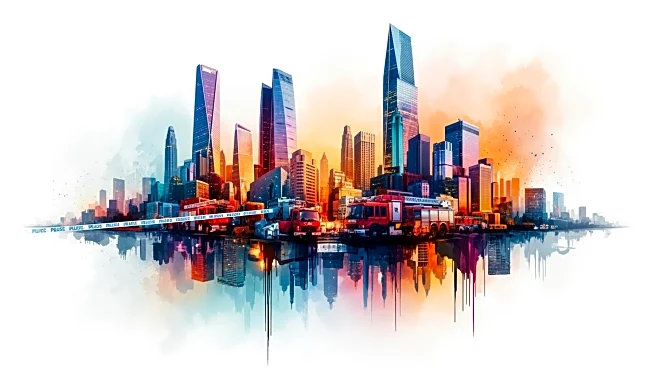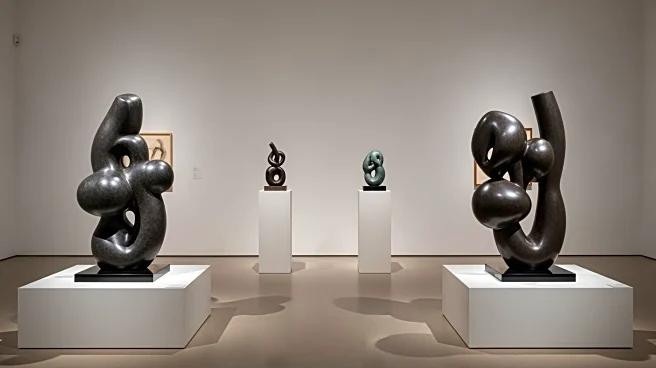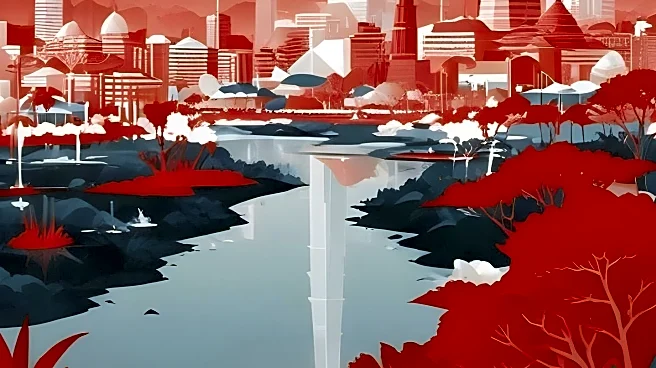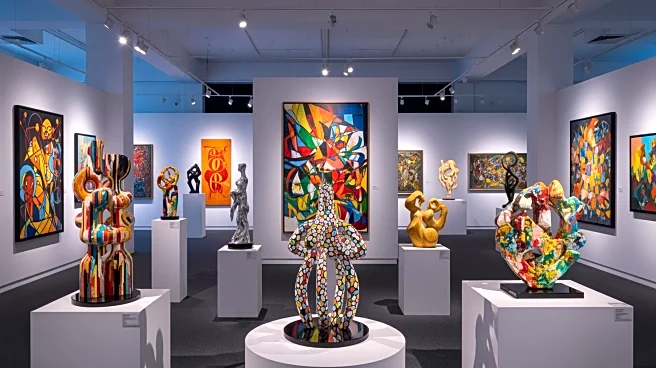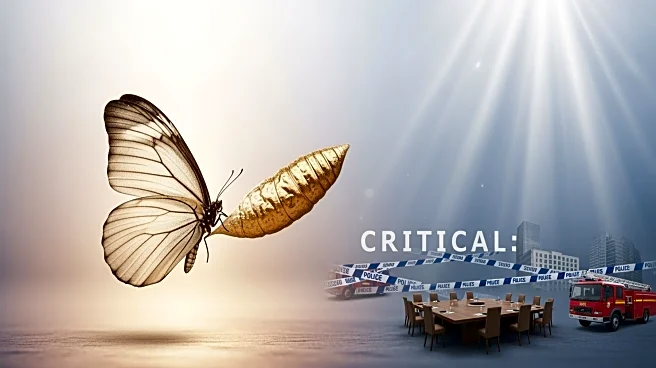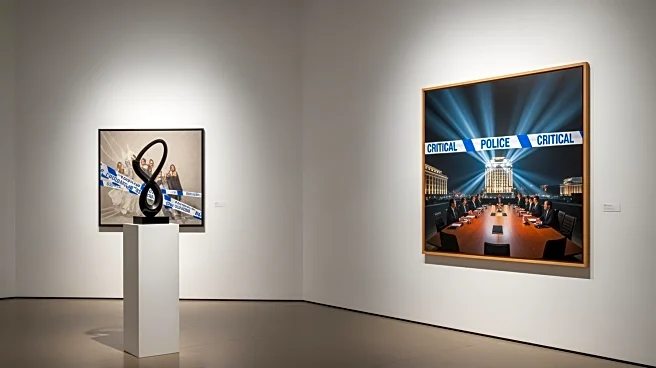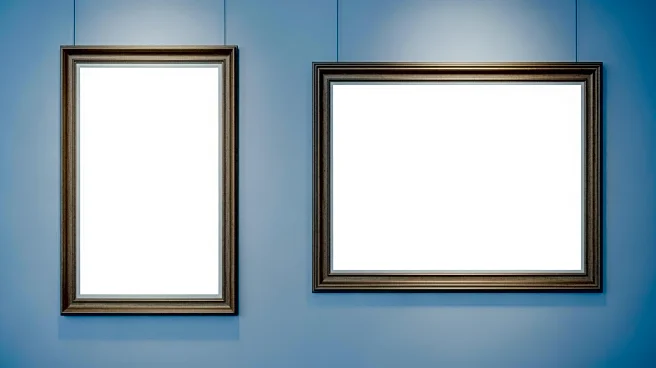What's Happening?
Brian Eno, renowned for his contributions to music and art, has launched a new series of paintings titled 'Blocks.' This collection consists of over 400 birch plywood slabs, each uniquely designed with vibrant colors and patterns. Eno created these pieces
by spray-painting over stencils, resulting in a diverse array of designs ranging from minimalistic to complex. The artworks will be available for purchase at London’s Paul Stolper Gallery starting November 12, priced at £500 ($656) each. The series reflects Eno's generative approach to art, emphasizing randomness and unpredictability, akin to his previous works like the 'Oblique Strategies' card deck.
Why It's Important?
This new series by Brian Eno highlights the intersection of art and randomness, a concept that has been central to his creative philosophy. By making these pieces accessible to the public, Eno not only democratizes art ownership but also challenges traditional notions of artistic creation. The affordability of the pieces allows a broader audience to engage with contemporary art, potentially inspiring new collectors and enthusiasts. Furthermore, Eno's work continues to influence both the art and music industries, reinforcing his status as a multidisciplinary innovator.
What's Next?
The 'Blocks' series will be on display at the Paul Stolper Gallery from November 14, 2025, to January 17, 2026. As the series becomes available, it is likely to attract attention from art collectors and enthusiasts worldwide. The gallery may see increased foot traffic and online engagement as people seek to acquire these unique pieces. Additionally, Eno's continued exploration of art and technology may lead to further innovative projects, potentially influencing future trends in both fields.
Beyond the Headlines
Eno's approach to art, which embraces chance and unpredictability, raises questions about the nature of creativity and the role of the artist. By allowing randomness to play a significant part in his work, Eno challenges the traditional view of the artist as a sole creator, instead highlighting the collaborative nature of art-making. This perspective may encourage other artists to explore similar methodologies, potentially leading to a broader acceptance of non-traditional art forms.
